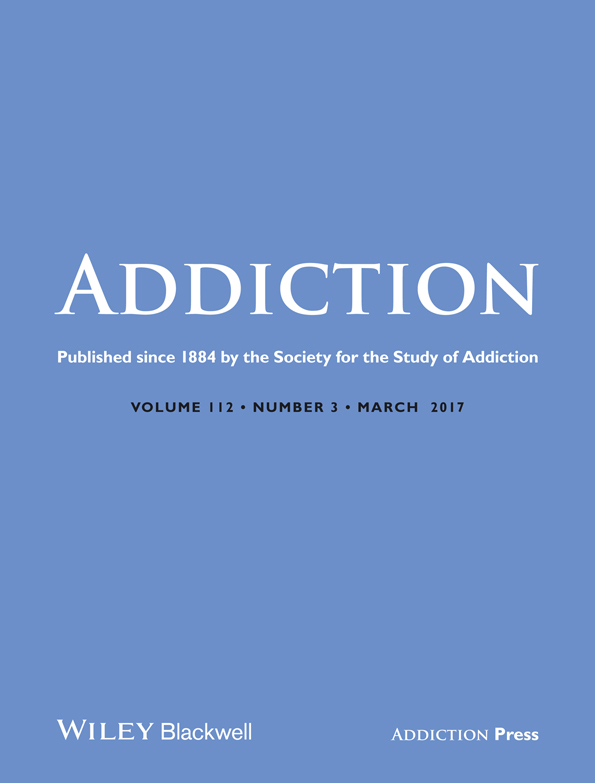Commentary on Mazerolle et al. (2017): The tide has turned—the shift to international supply undermines novel and effective local law enforcement efforts
The recent significant shift to international importation of methamphetamine may obviate the need for, and value of, an electronic tracking system (ETS) of precursor drugs involved in the production of methamphetamine in Australia. Moreover, local law enforcement initiatives, such as ETS, may contribute inadvertently to an unintended consequence of greater importation of high-quality crystal methamphetamine.
Meta-regulation strategies, such as electronic tracking systems (ETS) as described and analysed by Mazerolle et al. 1, have considerable merit and may have a potentially important part to play in the suite of effective strategies employed to address alcohol and other drug problems. In addition, they can offer a useful and constructive role for law enforcement to complement the work of the health and community service sectors.
The ETS described in Mazerolle et al.’s paper sets an ambitious goal of interrupting drug production, supply and possession. However, important questions arise regarding the efficacy of systems such as electronic tracking, especially in light of the changing market and manufacturing approaches that have occurred in relation to methamphetamine in recent times. In the space of very few years, the Australian illicit drug market has seen a dramatic and rapid shift away from the powdered form of methamphetamine (speed) to the more potent crystalline form (ice) 2. In addition, a substantial amount of the supply of ice now originates off-shore and is imported into Australia from Asia and China. Significant spikes in Australian border detections of methamphetamine importations have been reported since 2010 in terms of increased weight and purity of seizures 3. The increased number and weight of national methamphetamine seizures in 2014–15 were the highest on record 4. The Australian Department of Immigration and Border Protection detections of methamphetamine increased by 47% from 2013–14 to 2014–15, and the weight of methamphetamine detected almost doubled 4. Further, the increase in global methamphetamine demand has resulted in an expansion in the number and size of methamphetamine manufacturing regions and trafficking routes between 2009 and 2013 5. Estimates of the ratio of imported to locally produced ice suggest that by far the greater proportion of the drug now comes from overseas. As a result, previous strategies to interrupt local production and supply, for example by the application of ETS will, by necessity, be less effective.
Hence, the Mazerolle paper, while providing a rigorous examination of the efficacy of a potentially important regulatory mechanism, unfortunately targets a strategy that may now have been superseded in terms of its potential viability as a control supply mechanism. That is, the recent upsurge in the use of crystal methamphetamine that is substantially procured offshore from Asia and China may obviate the need for an elaborate and expensive local ETS system.
Furthermore, as the authors also note, the cost for the ETS is borne largely by the health-care system (and not by the law enforcement system); yet the health-care system sorely needs all available resources to address the burgeoning health and social problems associated with escalating harms from the use of crystal methamphetamine.
The evaluation of Project STOP (an online database in which pharmacists record sales of pseudoephedrine-based medication) demonstrates the feasibility of successfully implementing ETS. However, the relevance of this particular system to track a precursor substance for the production of methamphetamine may now be increasingly obsolete, given the rapid change to offshore production and importation of ice into Australia.
Importantly, we also need to consider whether the introduction of a successful strategy designed to curtail if not eliminate domestic availability of an essential precursor drug may have contributed inadvertently to an international supply displacement effect, and thereby enhanced inadvertently the attractiveness of a shift to offshore production and importation—and in so doing bypassing effective, stringent local law enforcement and containment strategies.
These purported limitations, and indeed any unintended and untoward consequences, notwithstanding the merits of ETS, should still be highlighted. In more general health contexts, the introduction of similar electronic systems such as real-time monitoring of prescribed opioids 6 is still lauded as a potentially valuable and viable adjunct to our harm reduction armamentarium.
Declaration of interests
None.
Acknowledgement
A.M.R.’s University professorial position is funded partly by the Australian Government Department of Health.




